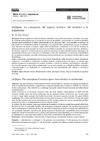Identificador persistente para citar o vincular este elemento:
https://accedacris.ulpgc.es/jspui/handle/10553/73062
| Campo DC | Valor | idioma |
|---|---|---|
| dc.contributor.author | Taira Alonso, Jin Javier | en_US |
| dc.date.accessioned | 2020-06-08T09:26:32Z | - |
| dc.date.available | 2020-06-08T09:26:32Z | - |
| dc.date.issued | 2017 | en_US |
| dc.identifier.issn | 2531-145X | en_US |
| dc.identifier.uri | https://accedacris.ulpgc.es/handle/10553/73062 | - |
| dc.description.abstract | Desde el punto de vista del turismo entendido como sector económico, constituye un campo de evidente potencialidad que se encuentra en vías de desarrollo y posicionado en un plan estratégico nacional para multiplicar su tráfico internacional en los próximos años. Esta iniciativa constituye un reto dentro de la tendencia actual de la demanda y la competitividad internacional a la que se enfrenta. Para afrontar este nuevo escenario, Japón debe reestructurar su territorio con el fin de contener la afluencia prevista desde el punto de vista de la movilidad sostenible; la concepción de redes temáticas; la creación, mejora y/o conservación de sus polos de atracción; la innovación de modelos tipológicos de alojamiento turístico que se adecuen a la demanda; y todo ello atendiendo a la necesaria sostenibilidad de un modelo económico que debe estructurarse transversalmente con un enfoque multiescalar de gran flexibilidad.Japón, consciente especialmente tras el desastre de Fukushima, debe afrontar el futuro atendiendo a procesos sostenibles y resilientes, estudiar modelos arquitectónicos de apoyo al turismo que aporten respuestas responsables al cambio climático a través de modelos bioclimáticos apoyados en el uso de energías renovables, optimizando sus recursos propios en su frágil equilibrio ecológico e incorporando a sus habitantes al compromiso de una hospitalidad más abierta y ambiciosa (omotenashi). | en_US |
| dc.description.abstract | The upward trend of international tourists visiting Japan is currently an ongoing development field of significant potentiality, supported by a national strategic plan in order to multiply its statistics in the coming years. This initiative is a challenge facing the current trend of demand and international competitiveness.Japan, involved in an economic recession since the early nineties which peaked in 1995 with the economy bubble burst, the Kobe earthquake and the terrorist attacks of the Aum sect, turned again to face a tragic triple scenario that tested the country resistance capacity towards the great Tohoku earthquake, the tsunami and the Fukushima nuclear plant disasters in 11th of March. Facing the urgent need for the material and social reconstruction of the country, Japan has met an unexpected positive economical vector as an international tourism attractor center.To address this new scenario, Japan must restructure its territory in order to contain the expected influx from the point of view of sustainable mobility; the conception of thematic networks; the creation, improvement and/ or maintenance of attraction nodes; the innovation of typological models of tourist accommodation to suit consumers’ demands; and above all, giving response to the necessary sustainability of an economical model that should be structured across a multi-scalar approach of great flexibility, in a call that incorporates its inhabitants in a more open and ambitious, if possible, commitment to hospitality (omotenashi). | en_US |
| dc.language | spa | en_US |
| dc.relation.ispartof | Mirai (Madrid) | en_US |
| dc.source | Mirai (Madrid) [ISSN 2531-145X] ,n. 1, p. 279-290 | en_US |
| dc.subject | 620101 Diseño arquitectónico | en_US |
| dc.subject | 531290 Economía sectorial: turismo | en_US |
| dc.subject.other | Japón | en_US |
| dc.title | [re]Japón. La concepción del espacio turístico: del territorio a la arquitectura | en_US |
| dc.type | info:eu-repo/semantics/article | en_US |
| dc.type | Article | en_US |
| dc.identifier.doi | 10.5209/MIRA.57118 | en_US |
| dc.description.lastpage | 290 | en_US |
| dc.identifier.issue | 0 | - |
| dc.description.firstpage | 279 | en_US |
| dc.investigacion | Ingeniería y Arquitectura | en_US |
| dc.type2 | Artículo | en_US |
| dc.description.numberofpages | 12 | en_US |
| dc.utils.revision | Sí | en_US |
| dc.identifier.ulpgc | Sí | en_US |
| dc.contributor.buulpgc | BU-ARQ | en_US |
| dc.description.erihplus | ERIH PLUS | - |
| item.fulltext | Con texto completo | - |
| item.grantfulltext | open | - |
| crisitem.author.dept | GIR TIDES: URSCAPES | - |
| crisitem.author.dept | IU de Turismo y Desarrollo Económico Sostenible | - |
| crisitem.author.dept | Departamento de Arte, Ciudad y Territorio | - |
| crisitem.author.orcid | 0000-0001-7507-1434 | - |
| crisitem.author.parentorg | IU de Turismo y Desarrollo Económico Sostenible | - |
| crisitem.author.fullName | Taira Alonso, Jin Javier | - |
| Colección: | Artículos | |
Los elementos en ULPGC accedaCRIS están protegidos por derechos de autor con todos los derechos reservados, a menos que se indique lo contrario.
